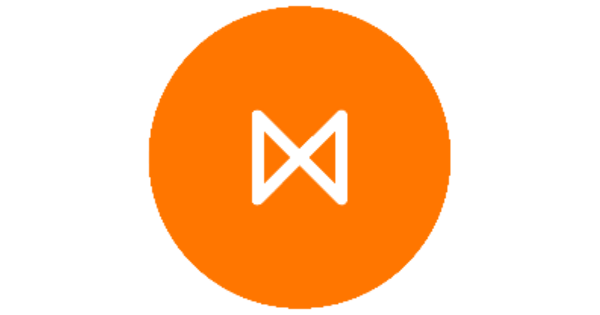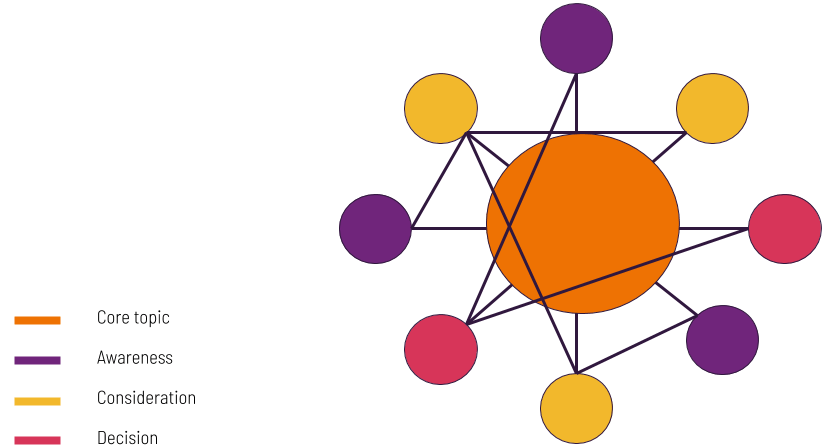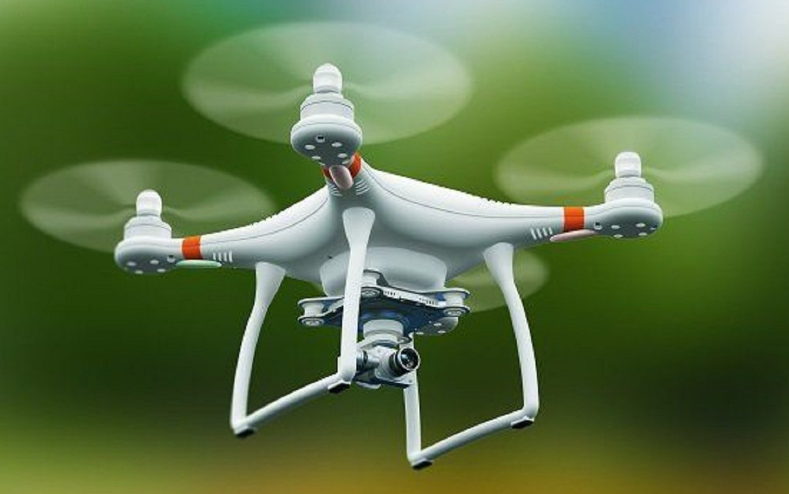Tracking metrics on social is a key component of any effective social media strategy, and Twitter is no exception. With around 330 million monthly active users, this social powerhouse is one of the most popular social networks and a key battleground for social media marketers.
But what metrics should you be tracking? And how can they help you improve your social strategy?
This post offers a quick look at the essential Twitter metrics and how they can inform and improve your social strategy.
Let’s get started!
 Granular metrics are more micro than macro. They usually relate to a specific Tweet or small group of Tweets. For example, if you noticed a spike in engagement on December 1, then you could investigate individual metrics for all posts on that day. Granular metrics allow you to discover patterns in your social campaigns, for example, you might notice that your best-performing Tweets have similarities such as the time you post, the type of imagers, of the number of hashtags used.
Another example of granular metrics is the performance of content within a demographic. For example, a sportswear brand may see that average engagement is much higher in the 18-24 demographic than in the 25-30 demographic. This insight could allow the brand to develop a campaign that will resonate with the 25-30 demographic.
Granular metric examples:
Granular metrics are more micro than macro. They usually relate to a specific Tweet or small group of Tweets. For example, if you noticed a spike in engagement on December 1, then you could investigate individual metrics for all posts on that day. Granular metrics allow you to discover patterns in your social campaigns, for example, you might notice that your best-performing Tweets have similarities such as the time you post, the type of imagers, of the number of hashtags used.
Another example of granular metrics is the performance of content within a demographic. For example, a sportswear brand may see that average engagement is much higher in the 18-24 demographic than in the 25-30 demographic. This insight could allow the brand to develop a campaign that will resonate with the 25-30 demographic.
Granular metric examples:
 Twitter is great but it isn’t the only platform you use for social media. You are active on Facebook, YouTube, Instagram and LinkedIn. Tracking all these metrics in separate silos across platforms is time-consuming and tedious. To get serious about social media metrics you need a standalone analytics solution such as Metigy that can house all your metrics in one dashboard. Not only does this keep you organized and focused on executing your social strategy, but it also makes it easy to compare metrics and KPIs across platforms. It enables you to overcome the limitations of native social analytics and unlock more insights.
Learn more on how Metigy can boost your social strategy today.
Twitter is great but it isn’t the only platform you use for social media. You are active on Facebook, YouTube, Instagram and LinkedIn. Tracking all these metrics in separate silos across platforms is time-consuming and tedious. To get serious about social media metrics you need a standalone analytics solution such as Metigy that can house all your metrics in one dashboard. Not only does this keep you organized and focused on executing your social strategy, but it also makes it easy to compare metrics and KPIs across platforms. It enables you to overcome the limitations of native social analytics and unlock more insights.
Learn more on how Metigy can boost your social strategy today.
Why are Twitter metrics important?

- Learn more about your audience's interests to select and create content that answers to those preferences.
- Use your follower’s location data to optimize your tweeting times for when you’d have a bigger impact.
- Learn from past wins and mistakes. Look at your best and worst-performing tweets. Probably you can learn a thing or two about what to avoid and what to replicate in your next tweets to optimize your performance.
What are some Twitter metric best practices?

1. Metrics should be used together with KPIs.
A KPI is effectively using a metric to create a business goal. Such as boosting the number of followers by 5% in Q1 of 2020. KPIs allow you to track your progress over time and see if you hit your targets.2. Use high-level metrics for an overview
There are two main types of metrics: high-level and granular. Each social media strategy needs a mix of both. High-level metrics allow you to track progress day-to-day. They filter out any of the noise or fluctuations and show you if you’re going in the right direction.3. Use granular metrics for key insights
Granular metrics allow you to dig deep into the data and are usually used for answering a specific question: what is our weakest target demographic; or informing a strategic decision, how can we boost engagement in this demographic?4. Use an analytics solution to track your metrics
Twitter does have an analytics dashboard that is available to all users. However, it’s important to note that like with most social media platform’s native analytics, there are limitations. For example, when looking at your dashboard, you can only view your analytics data for the last 90 days, meaning you will regularly have to export data and build reports yourself. If you don’t have an analytics solution yet such as Metigy, then Twitter analytics is a good place to get familiar with the metrics mentioned here. Let’s look at some key Twitter metrics:High-level Twitter metrics

Number of followers
Tracking your number of followers over time allows you to see how your community is growing. You should aim to increase followers at a steady rate over time. If you notice a plateau in follower growth, it may be time to investigate the cause. Related: Check out Metigy Objectives that can help you quickly grow your social media audience and reachTotal Impressions
Twitter defines impressions has how many times your Tweets are seen. However, it’s more accurate to define it as how many times your Tweets are shown to users. This can include one user seeing your Tweets multiple times, and your Tweet appearing in multiple locations such as Trending or when it’s retweeted.Total Engagement
Engagement is when a user takes an action on one of your Tweets. Actions that are counted as engagement include clicks anywhere on the Tweet (including hashtags links, avatar, username, and Tweet expansion), retweets, replies, follows and likes. It’s important to note that if one user takes multiple actions, this counts as multiple engagements. Your engagement rate tells you how users are interacting with your Tweets. A high engagement rate shows that you have an active social community.Engagement rate
One way to benchmark your engagement is by comparing it to the total number of impressions. This is called your engagement rate. The higher your engagement rate, the more active your social followers are.Average engagement rate
Average engagement rate is tracking your engagement rate in a specific time period such as one day. This metric captures the engagement rate of all posts in that period and calculates the average. Over time you can see spikes in engagement which can help you identify which posts are performing well.Average likes
Similar to average engagement, average likes track the number of likes you get on a specific day across all posts. This metric can help you create benchmarks and KPIs. If you know you get roughly 50 likes on average, you can aim to increase this over time.Average retweets
Parallel to average likes, average retweets measure the number of times your posts were shared in a specific time period. Retweets are a great metric to see if your users are sharing your posts. Increasing the shareability of your posts is a great way to grow your follower base.Demographics
Demographic data allows you to learn more about your followers and includes information such as country, age, gender and main interests.Granular metrics
 Granular metrics are more micro than macro. They usually relate to a specific Tweet or small group of Tweets. For example, if you noticed a spike in engagement on December 1, then you could investigate individual metrics for all posts on that day. Granular metrics allow you to discover patterns in your social campaigns, for example, you might notice that your best-performing Tweets have similarities such as the time you post, the type of imagers, of the number of hashtags used.
Another example of granular metrics is the performance of content within a demographic. For example, a sportswear brand may see that average engagement is much higher in the 18-24 demographic than in the 25-30 demographic. This insight could allow the brand to develop a campaign that will resonate with the 25-30 demographic.
Granular metric examples:
Granular metrics are more micro than macro. They usually relate to a specific Tweet or small group of Tweets. For example, if you noticed a spike in engagement on December 1, then you could investigate individual metrics for all posts on that day. Granular metrics allow you to discover patterns in your social campaigns, for example, you might notice that your best-performing Tweets have similarities such as the time you post, the type of imagers, of the number of hashtags used.
Another example of granular metrics is the performance of content within a demographic. For example, a sportswear brand may see that average engagement is much higher in the 18-24 demographic than in the 25-30 demographic. This insight could allow the brand to develop a campaign that will resonate with the 25-30 demographic.
Granular metric examples:
- Engagement of a single Tweet
- Content performance by demographic
- Number of hashtags vs. overall tweet performance
- Length of text per Tweet vs. performance
Unlock the potential of Twitter metrics
 Twitter is great but it isn’t the only platform you use for social media. You are active on Facebook, YouTube, Instagram and LinkedIn. Tracking all these metrics in separate silos across platforms is time-consuming and tedious. To get serious about social media metrics you need a standalone analytics solution such as Metigy that can house all your metrics in one dashboard. Not only does this keep you organized and focused on executing your social strategy, but it also makes it easy to compare metrics and KPIs across platforms. It enables you to overcome the limitations of native social analytics and unlock more insights.
Learn more on how Metigy can boost your social strategy today.
Twitter is great but it isn’t the only platform you use for social media. You are active on Facebook, YouTube, Instagram and LinkedIn. Tracking all these metrics in separate silos across platforms is time-consuming and tedious. To get serious about social media metrics you need a standalone analytics solution such as Metigy that can house all your metrics in one dashboard. Not only does this keep you organized and focused on executing your social strategy, but it also makes it easy to compare metrics and KPIs across platforms. It enables you to overcome the limitations of native social analytics and unlock more insights.
Learn more on how Metigy can boost your social strategy today.








